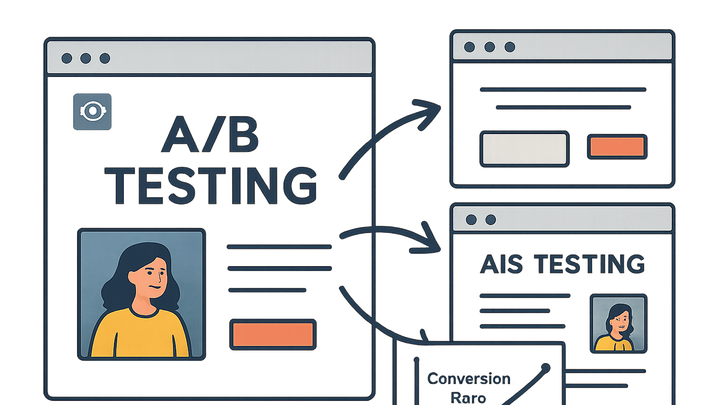Published on 2025-06-29T20:23:58Z
What is Multivariate Testing? Examples with Prevue.me
Multivariate Testing (MVT) is an optimization technique used in CRO, UX, and SEO to evaluate multiple page elements simultaneously. Rather than testing a single variable (like a headline or button color), MVT analyzes combinations of changes—headlines, images, call-to-action buttons, layouts, and more—to identify which mixture produces the highest engagement and conversion rates. By deploying a matrix of variations, teams can capture interaction effects between elements, uncovering insights that simple A/B tests might miss. Tools like Prevue.me can help by auditing your page, suggesting high-impact variables, and prioritizing test ideas for maximum lead generation. When implemented effectively, MVT accelerates data-driven design decisions and enhances both user experience and search performance.
Multivariate testing
Tests multiple page elements simultaneously to identify the best combination for conversions, UX, and SEO.
Overview of Multivariate Testing
This section outlines what multivariate testing is, how it contrasts with simpler A/B tests, and when to use it in a website optimization strategy.
-
Definition
Multivariate testing is a method for testing multiple elements simultaneously to determine which combination performs best against defined metrics.
-
Mvt vs a/b testing
Unlike A/B tests, which compare two variants of a single element, MVT examines the performance of all possible combinations of multiple elements to identify interaction effects.
- Scope:
MVT tests multiple elements at once, while A/B testing focuses on a single variable.
- Traffic requirements:
Due to more variations, MVT requires higher traffic volumes to achieve statistical significance.
- Scope:
-
Ideal use cases
Best suited for high-traffic pages where multiple design components can be fine-tuned to boost conversions, engagement, and search relevance.
How Multivariate Testing Works
Explains the end-to-end process of designing, running, and analyzing a multivariate test, from hypothesis formation to statistical evaluation.
-
Experiment design
Selecting and defining which page elements and variations will form the test matrix.
- Variation selection:
Identify key elements (e.g., headline, image, CTA) that impact user behavior.
- Variation combinations:
Decide how many variations per element to include, balancing coverage with traffic constraints.
- Variation selection:
-
Traffic allocation
Distributing incoming visitors evenly across all variation combinations to ensure fair comparison.
- Randomization approach:
Use algorithmic or random assignment to ensure unbiased traffic distribution.
- Sample size calculation:
Determine the number of visitors needed per combination to reach statistical power.
- Randomization approach:
-
Data analysis
Evaluating results to determine which combination yields optimal performance.
- Statistical significance:
Apply proper tests (e.g., chi-square, t-tests) to confirm real performance differences.
- Interaction effects:
Analyze how variations of different elements influence each other.
- Statistical significance:
Implementing Multivariate Tests Using Prevue.me
Guidance on integrating prevue.me audits into your MVT workflow and setting up experiments in testing platforms.
-
Generating test ideas with prevue.me
Leverage prevue.me’s CRO, UX, SEO, and accessibility critiques to identify high-impact elements and formulate hypotheses.
- Perform page audit:
Run prevue.me to get actionable critiques on your landing pages.
- Prioritize hypotheses:
Use prevue.me’s scoring to rank test ideas by potential uplift.
- Perform page audit:
-
Configuring experiments
Set up your multivariate test in a testing platform like Optimizely, VWO, or Adobe Target.
- Choose testing tool:
Select a platform that supports MVT and integrates with your tech stack.
- Define variations:
Enter each element variation into the tool’s experiment builder.
- Implement tracking:
Ensure conversion goals and analytics tracking are properly configured.
- Choose testing tool:
-
Monitoring and optimizing
Track test performance, analyze insights, and iterate based on findings.
- Analyze interim data:
Check early trends but avoid premature conclusions.
- Declare winner:
Use statistical thresholds to identify top-performing combinations.
- Iterate on results:
Refine variables for follow-up tests to continue optimizing.
- Analyze interim data:
Benefits and Considerations
Highlights the advantages of MVT and common challenges to watch out for in execution.
-
Key benefits
Primary advantages of employing MVT in digital optimization efforts.
- Holistic insights:
Understand how multiple elements interact to drive user behavior.
- Faster optimization:
Simultaneously test multiple changes to accelerate learning.
- Enhanced user experience:
Deliver a more tailored and engaging interface for visitors.
- Holistic insights:
-
Common pitfalls
Frequent mistakes and limitations when running multivariate tests.
- Insufficient traffic:
Too many variations can dilute traffic and delay results.
- Complex setup:
Designing and managing many combinations increases complexity.
- Overfitting:
Avoid optimizing for noise; ensure results are generalizable.
- Insufficient traffic:
